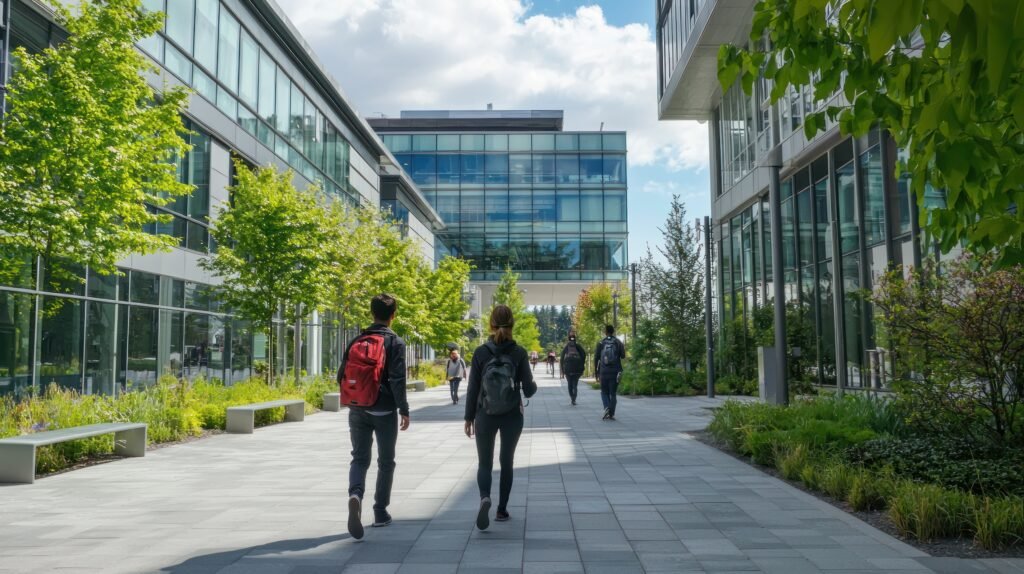Across the education sector, the safety of students and staff remains a top priority. At the same time, institutions are under increasing pressure to deliver efficient operations and a seamless student experience. Traditional access methods such as ID cards, swipe passes, or PIN codes are becoming outdated—they can be lost, stolen, or shared, leaving institutions exposed to security risks.
This is why universities, colleges, and schools around the world are turning to biometric access control systems. By using unique physical identifiers such as fingerprints, facial recognition, or iris scans, biometrics provide a higher level of security while also simplifying daily operations. In this article, we explore how biometrics are reshaping campus security, supporting operational efficiency, and transforming the student experience.
The Security Imperative: Strengthening Campus Protection
Educational institutions face a unique challenge: they must remain open and welcoming environments while also safeguarding people, assets, and sensitive information. A single breach, whether an unauthorised visitor in student housing or stolen research data from a lab, can have serious consequences.
Biometric systems close the gaps left by traditional security measures. Key benefits include:
- Stronger Access Control
Biometric authentication ensures only authorised individuals can access student accommodation, classrooms, laboratories, or administrative offices. Unlike cards or keys, biometrics cannot be borrowed or duplicated. - Real-Time Monitoring
Security managers gain visibility into who is entering and leaving buildings at any given time, with audit trails available for compliance and incident investigation. - Reduced Risk of Intrusion
Facial recognition or fingerprint scanners at entry points act as a deterrent to unauthorised access, significantly lowering the risk of intruders on campus.
For institutions responsible for thousands of students and staff, these measures are invaluable in protecting both people and resources.
Operational Efficiency: Automating and Streamlining Campus Processes
For operations managers, biometrics offer far more than just secure access. They provide opportunities to automate routine tasks and reduce administrative burden. Key applications include:
- Automated Attendance Tracking
Biometric attendance systems remove the need for manual registers or swipe cards, ensuring accurate records while saving staff time. - Integrated Access to Facilities
From libraries to sports centres, students can use the same biometric credential to access multiple services, simplifying their daily routine. - Cashless Payments
With biometric payment systems, students can pay in cafeterias, vending machines, or campus shops without cash or cards, reducing queues and improving hygiene. - Resource Allocation Insights
Data collected from biometric systems provides operations teams with actionable insights—such as peak facility usage times—helping them optimise staffing and resources.
These efficiencies not only save costs but also allow staff to focus more on value-added tasks rather than repetitive administration.
Enhancing the Student Experience
Today’s students are digital natives. They expect technology to be fast, intuitive, and secure. Biometrics align with these expectations by creating a more streamlined campus experience:
- Convenience – No need to carry cards or remember passwords; access is immediate and secure.
- Speed – Faster entry to classrooms, accommodation, and facilities reduces waiting times and bottlenecks.
- Peace of Mind – Students and parents gain confidence knowing robust systems are in place to protect their safety.
By integrating biometrics into everyday student life, institutions not only strengthen security but also improve satisfaction and engagement.
Data Privacy and Compliance: Meeting Regulatory Standards
Introducing biometric technology requires careful attention to data protection and privacy regulations, particularly in regions governed by GDPR, ISO 27001, or equivalent standards. Concerns about how biometric data is stored and used are valid, and institutions must take a transparent, responsible approach.
Modern biometric solutions address these issues by:
- Using encryption to protect data both at rest and in transit.
- Offering on-device authentication, where biometric data is stored locally rather than in central databases.
- Implementing strict access controls to ensure only authorised staff can handle sensitive data.
- Maintaining audit logs for accountability and compliance reporting.
By embedding privacy into system design, educational institutions can build trust with students, parents, and staff while remaining compliant with international standards.
The Future of Campus Security and Operations
The future of the education sector lies in creating smarter, safer, and more connected campuses. Biometrics will increasingly integrate with:
- AI-powered CCTV and video analytics for proactive threat detection.
- Smart building systems to optimise energy use and facility management.
- Mobile credentials that combine biometrics with smartphones for even greater flexibility.
This convergence of technologies will empower institutions to not only secure their campuses but also enhance efficiency and deliver an improved student experience.
Biometric technology is no longer a futuristic concept—it is a proven solution already transforming schools, colleges, and universities worldwide. For security managers, biometrics provide stronger protection against unauthorised access and better oversight. For operations managers, they automate processes, reduce administrative workload, and generate valuable operational insights. And for students, they deliver convenience, speed, and peace of mind.
At Arana Security, we specialise in biometric and access control solutions tailored to the education sector. Whether your priority is protecting accommodation, streamlining attendance, or enabling cashless payments, our systems are designed to make campuses safer and smarter.

